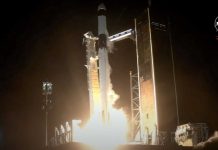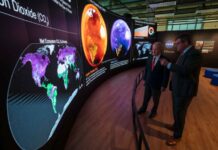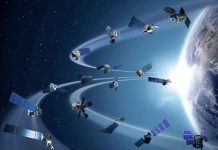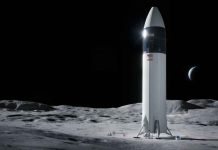In the 1960s, the roar of rockets and the race to the moon captivated millions of people around the world. From the fear of the cold war, the first flight of Sputnik, a Soviet satellite orbiting the Earth, the race was on.
The Soviet Union took an early lead in the Space Race. However the United States took up the challenge and soon started exploring space.
The election of President John Fitzgerald Kennedy and his administration called “The New Frontier” led to the President taking a special interest in the exploration of space.
Going to the moon was the topic of a famous speech by President Kennedy.
This September will be sixty years since President Kennedy gave that speech that inspired so many people.
NASA and Rice University in Houston will host multiple events in September to celebrate the 60th anniversary of John F. Kennedy’s historic speech at Rice Stadium, rallying the nation to land astronauts on the Moon before the end of the decade and bring the crew safely back to Earth.
“We meet in an hour of change and challenge, in a decade of hope and fear, in an age of both knowledge and ignorance. The greater our knowledge increases, the greater our ignorance unfolds. No man can fully grasp how far and how fast we have come. But condense, if you will, the 50,000 years of man’s recorded history in a time span of about a half a century. Stated in these terms, we know very little about the first 40 years, except at the end of them, advanced man had learned to use the skins of animals and cover them.
“Then about 10 years ago, under this standard, man emerged from his caves to construct other kinds of shelter. Only five years ago, man learned to write and use a car with wheels. Christianity began less than two years ago. The printing press came this year.
“And then less than two months ago, during this whole 50 year span of human history, the steam engine provided a new source of power. Newton explored the meaning of gravity. Last month, electric lights and telephones and automobiles and airplanes became available. Only last week, we developed penicillin and television and nuclear power. This is a breathtaking pace and such a pace cannot help but create new ails as it dispels old.
“So it is not surprising that some would have us stay where we are a little longer, to rest, to wait. If this capsuled history of our progress teaches us anything, it is that man in his quest for knowledge and progress is determined and cannot be deterred.
“We shall send to the moon 240,000 miles away, a giant rocket, more than 300 feet tall on an untried mission to an unknown celestial body, and then return it safely to Earth. But why some say the moon? Why choose this as our goal? And they may well ask, why climb the highest mountain? Why 35 years ago fly the Atlantic?
“We choose to go to the moon.
“We chose to go to the moon. We choose to go to the moon in this decade and do the other things not because they are easy, but because they are hard.
“Because that goal will serve to organize and measure the best of our energies and skills, because that challenge is one that we’re willing to accept.
“One we are unwilling to postpone. And therefore, as we set sail, we ask God’s blessing on the most hazardous and dangerous and greatest adventure that man has ever gone”.
The agency will provide live coverage of the final event at noon EDT (11 a.m. CDT) on Monday, Sept. 12, commemorating the speech on NASA Television, the NASA app, and the agency’s website.
NASA Administrator Bill Nelson will be the keynote speaker, and the program will include other agency officials, dignitaries, and local and national elected officials.
Gates to the stadium will open to the public at 9 a.m. CDT Monday. The event will feature exhibits from NASA, Space Center Houston, Rice University, and space industry partners, who will commemorate Kennedy’s historic challenge and unprecedented commitment of resources that set a young space agency on the path to achieve the goal with the successful landing of Apollo 11 astronauts on the Moon on July 20, 1969.
Today, NASA is ready to launch the agency’s Artemis I test flight to the Moon, a major step forward in a new era of human deep space exploration. NASA is targeting no earlier than Monday, Aug. 29, for the launch of the Space Launch System rocket to send the Orion spacecraft on the Artemis I flight test around the Moon and back to Earth.
“In 1962, President Kennedy delivered a historic speech at Rice University on his groundbreaking plans for the new frontier and sending the first humans to the Moon. Sixty years later, we choose to go to the Moon – and on to Mars,” said NASA Administrator Bill Nelson. “We are gearing up for the first test flight of the most powerful rocket in the world for Artemis I. This time, we’re going to the Moon with the goal of establishing a human presence to learn how to live and work in deep space to prepare for the first human missions to Mars. We continue to build on the legacy of the Apollo program as the Artemis Generation prepares to go farther into the cosmos than ever before.”
Through Artemis missions, NASA will land the first woman and the first person of colour on the Moon, using innovative technologies to explore more of the lunar surface than ever before for the benefit of all. In collaboration with commercial and international partners, NASA will establish the first long-term presence on the Moon. Then, humanity will use what it learns on and around the Moon to begin the next giant leap: sending the first astronauts to Mars.
“We look forward to welcoming the community to Rice University to commemorate President Kennedy’s historic speech and the important role Houston has played in shaping our nation’s space program,” said Vanessa Wyche, director of NASA’s Johnson Space Center. “NASA’s Apollo Program captured the world’s attention and demonstrated the power of America’s vision and technology to ignite generations of great achievements, exploration, and scientific discovery. Our leadership in space continues, as we move forward to the Moon once more and inspire the next generation of explorers, who will carry us to even greater heights.”
Additional events and activities include:
Saturday, Sept. 10
- 10 a.m. CDT (11 a.m. EDT) – NASA pavilion and Industry and Research exhibits open to the public, free of charge.
- 6:30 p.m. CDT (7:30 p.m. EDT) — Commemorative football game between the Rice University Owls and the McNeese State University Cowboys in Rice Stadium
Sunday, Sept. 11
- 10 a.m. CDT (11 a.m. EDT) – Community Day: NASA and industry exhibits open to the public
Monday, Sept. 12
- 11 a.m. CDT (Noon EDT) – As noted above, NASA will provide live coverage of the main event. Participants will include:
- NASA Administrator Bill Nelson
- Bob Cabana, NASA associate administrator
- Vanessa Wyche, director, NASA Johnson Space Center
- Shannon Walker, NASA astronaut
- Reggie DesRoches, president, Rice University
- Dr. David Alexander, director, Rice Space Institute (master of ceremonies)
- Jean-Loup Chrétien, ESA (European Space Agency) astronaut, retired
- Avalon Hogans, Houston’s youth poet laureate







